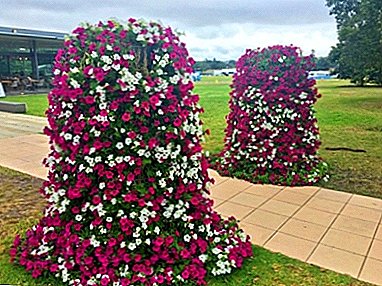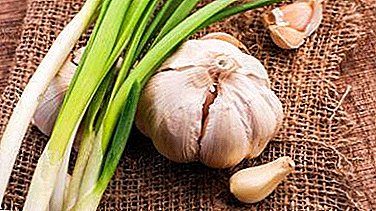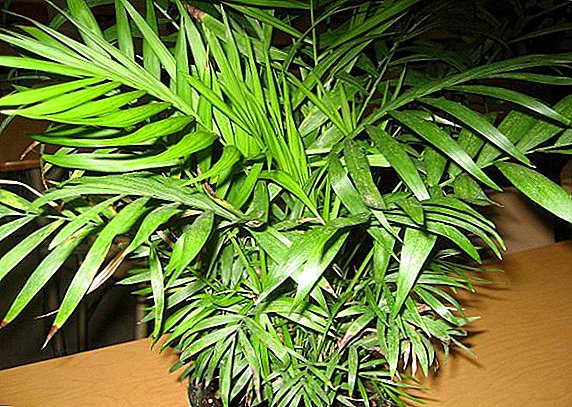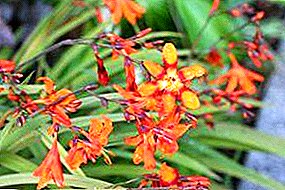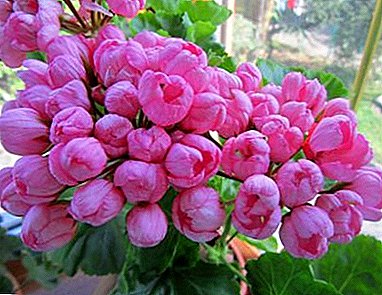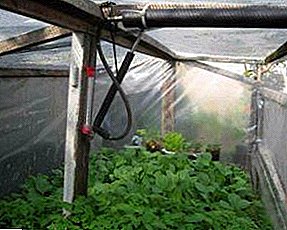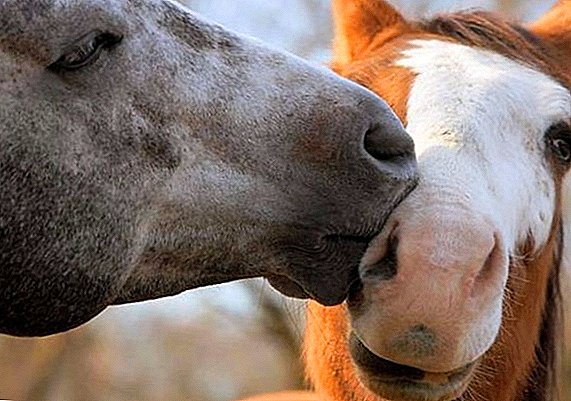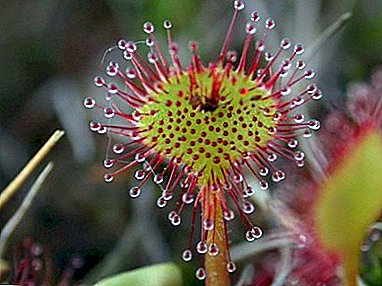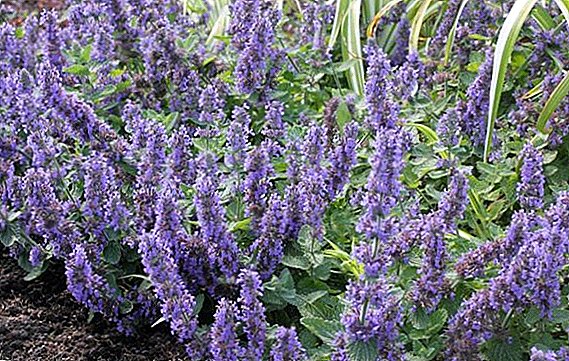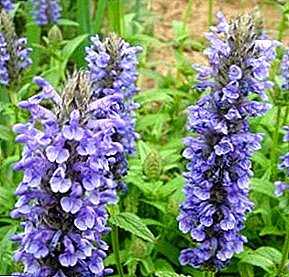 Kotovnik Fassena - decorative decoration of any flower bed. Due to the long and abundant flowering it is often used in landscape design to create exquisite compositions. The plant looks like a lavender bush. This grass received its unusual name due to a peculiar smell that attracts cats like valerian. In the people it is called "catnip". We offer to get acquainted with this amazing plant closer.
Kotovnik Fassena - decorative decoration of any flower bed. Due to the long and abundant flowering it is often used in landscape design to create exquisite compositions. The plant looks like a lavender bush. This grass received its unusual name due to a peculiar smell that attracts cats like valerian. In the people it is called "catnip". We offer to get acquainted with this amazing plant closer.
Botanical description
Kotovnik Fassena, a perennial plant of the Gubocolaceae family, was born by successfully crossing the catnies of Mussini and Nepetella. 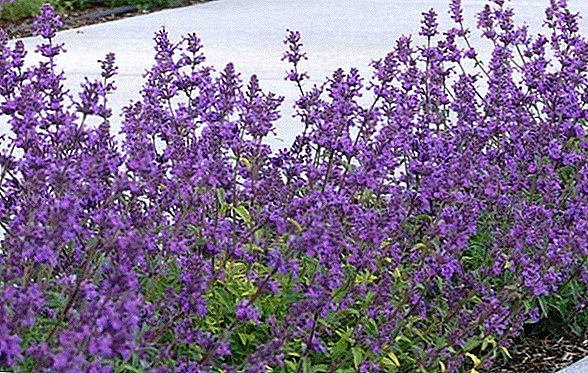
- Height: 20-60 cm
- Rhizome: branchy.
- Stems: erect.
- Leaves: oval heart-shaped with pointed edges, from green to gray-green.
- Colour: blue, blue, lavender, purple.
- Inflorescences: long, strewn with flowers.
- Flowering period: from June to September, can bloom twice a year.
- Fruit: seed boxes.
The Gubocolaceae family also includes such plants as plecranthous, fizostegiya, savory and thyme, yasnotka, budra, ivy-shaped, clary sage, monard, coleus.
The plant has a pleasant pungent aroma, similar to mint. It has a peculiar spicy-bitter taste. Kotovnik Fassena has high frost resistance, photophilous, prefers moist soil.
Grass grows in meadows and forest glades, often found along roads and on rocky slopes.
Did you know? In ancient times, catnip was considered a magical plant - it was used to summon otherworldly forces in love spells.
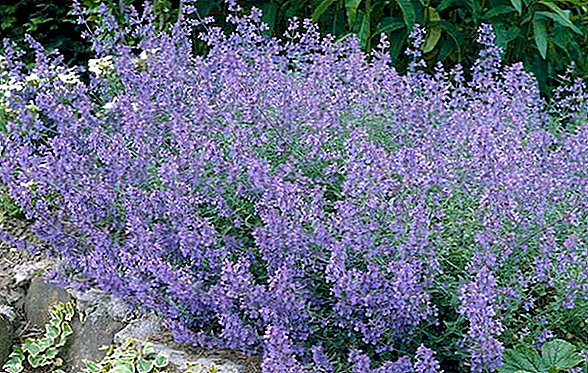
Chemical composition
The composition of the leaves and young shoots of catnip Fassin includes:
- essential oils: geranial, neral, geraniol, nerol, geranyl acetate, citronellol;
- vitamin C;
- saponins;
- glycosides;
- flavonoids;
- bitter and tannins;
- mucus.
Varieties
Three varieties of cattle Fassen are most popular:
- "Six Hills Giant";
- "Blue Wonder";
- "Walkers Low".
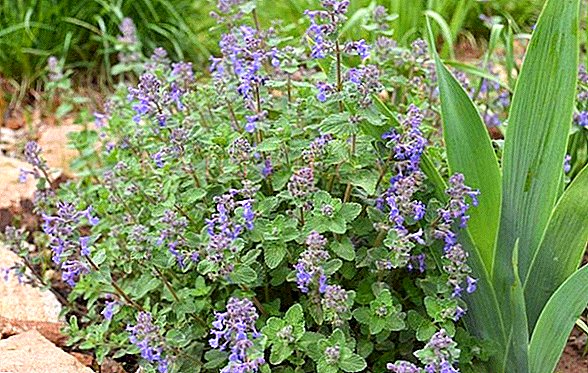
"Six Hills Giant"
"Six Hills Giant" - perennial ornamental plant up to 50 cm in height. Sprawling bush with bright green leaves. Differs in saturated blue-violet inflorescences. The flowering period is quite long - from late spring to early September.
The plant has a pleasant lemon-mint flavor. Prefers light fertile soil, grows well in a sunny and warm place. Drought resistant, quickly growing. In flower beds combined with roses and other large perennials. 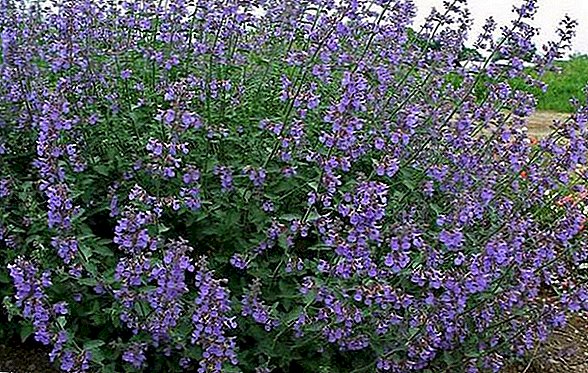
Blue Wonder
"Blue Wonder" - dwarf aromatic plant up to 20 cm in height. Bush thick and fluffy with spikey sky-blue flowers. Flowering grass lasts from June to September. It grows quickly and does not need special care.
A distinctive feature of this variety - low bushes with a bright azure shade create the effect of "blue river" along the paths or alleys. 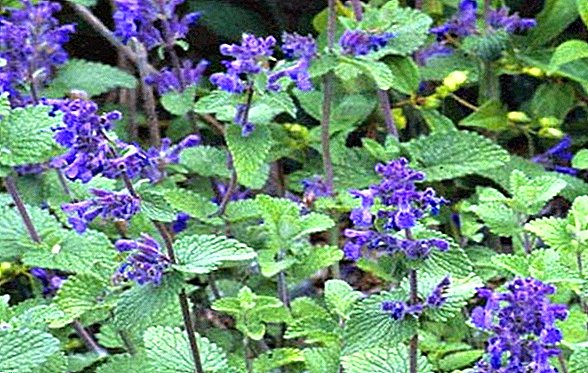
"Walkers Low"
Sort "Walkers Low" - perennial spicy-aromatic plant up to 60 cm high with finely toothed leaves and lavender-blue flowers. Flowering occurs twice a year: in May - June and September.
It prefers sunny places and moderately wet soils. It is frost-resistant, does not demand shelter for the winter. Successful neighbors in the flowerbed will be roses, delphiniums, phloxes, silvery wormwood. 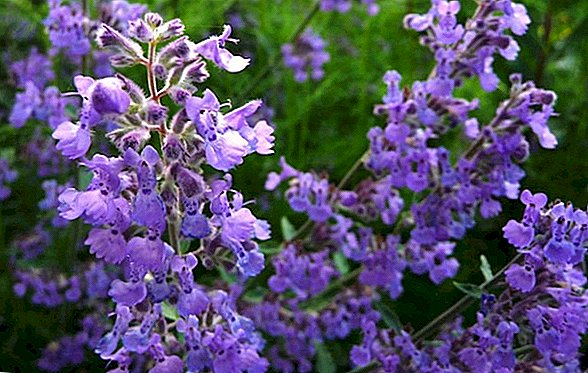
Important! Kotovnik Fassena has a strong aroma that repels mice and other pests of the garden.
Application
Kotovnik Fassena is a favorite of gardeners, but it is widely used not only in landscape design, but also in cooking, folk medicine, aromatherapy, and the perfume industry.
In medicine
Due to its rich chemical composition, catnip has a positive effect on human health and has long been used as a medicine.
The plant is known for its anti-inflammatory, antipyretic, hemostatic, expectorant, antidepressant, antispasmodic and tonic effect.
The sucker silvers, linden, cornflower, maple, white willow bark, wild rose, elderberry, and cornel have anti-inflammatory and antipyretic effects.From it make broths and tinctures.
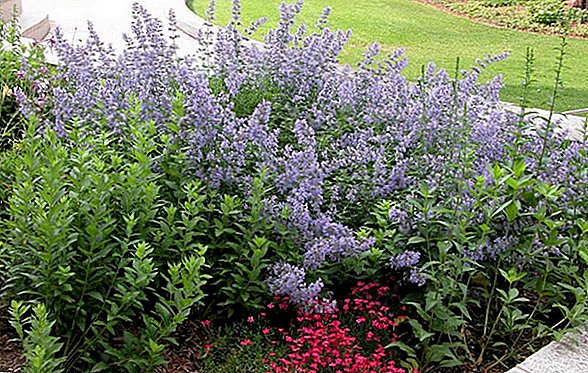 In folk medicine, they are used to increase appetite and improve the functions of the digestive, urogenital, nervous, cardiovascular systems.
In folk medicine, they are used to increase appetite and improve the functions of the digestive, urogenital, nervous, cardiovascular systems.The plant is effectively used in:
- cough;
- bronchitis;
- jaundice;
- gastritis;
- anemia;
- migraine;
- insomnia;
- kidney disease;
- Bladder.
Preparations based on catnip eliminate cramps, relieve spasms, reduce pain, relieve worms, restore the menstrual cycle. The herb is often used in the treatment of diabetes and hypertension. 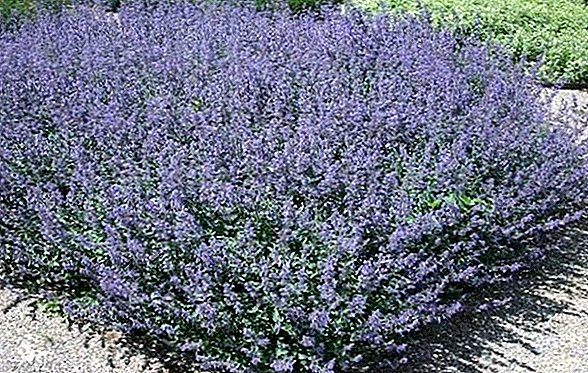 Kotovnik improves immunity and normalizes metabolism in the body. Outwardly, this plant acts as an antiseptic for scabies, eczema, pimples, boils and other purulent inflammation of the skin.
Kotovnik improves immunity and normalizes metabolism in the body. Outwardly, this plant acts as an antiseptic for scabies, eczema, pimples, boils and other purulent inflammation of the skin.
Did you know? In the Middle Ages, catnip was used for abortion.
In aromatherapy
Essential oils are made from the catnip grass. A few drops of such oils calm the nervous system, help a person to calm down and refresh, to gain new strength. Warm baths with essential oils relax, relieve fatigue and normalize sleep.
The plant is effectively used in love magic for love spells. It is believed that the scent of this herb can inflame love or keep a companion. 
In production
Essential oils of catnip are used for the manufacture of cosmetic products for skin and hair care, as well as perfumed products. Essential substances give them a fresh lemon flavor.
In the manufacture of cosmetics, veronica officinalis, amaranth, citronella essential oil, freesia, barberry, soapstone, almond are also used.The plant is also used for the production of special toys for cats. It is often added to anti-mosquitoes and cockroaches — a specific ethereal odor that repels insects.
In landscape design
Kotovnik differs rare for plants blue cold shades and because of this occupies an important place in landscape design. The plant is suitable for the decoration of flower beds, forms long flowering borders along the paths, it is well combined with stone in rockeries.
Miniature varieties plant roofs and facades. It will perfectly fit into any flower arrangement and will look magnificent and beautiful. Gardeners often combine it with roses, lavender, sage, phlox, peonies. 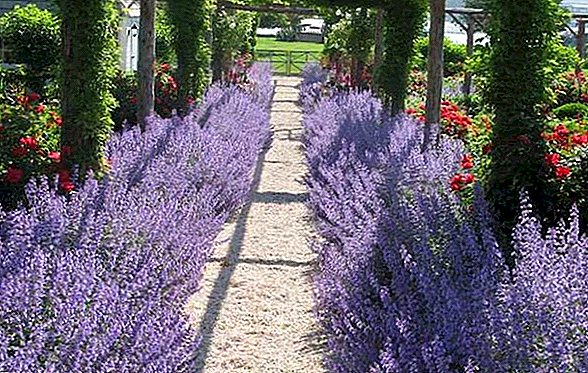
In cooking
Due to its rich lemon-mint flavor and pleasant spicy aroma, the plant is highly valued in cuisines of different countries. The stems and leaves are dried and ground into powder - it turns into an aromatic spice.
As a spice, they also use cloves, saffron, nutmeg, turmeric, and chili.It is added to marinades for salting fish, sauces, salads from fresh vegetables, desserts, jam. This is a wonderful ingredient for the production of cheeses, alcoholic and non-alcoholic beverages, confectionery.
Tea brewed from dried catnip is not only delicious, but also healthy, with a strong lemon scent.
Important! Kotovnik does not lose its beneficial properties and noble aroma after heat treatment.
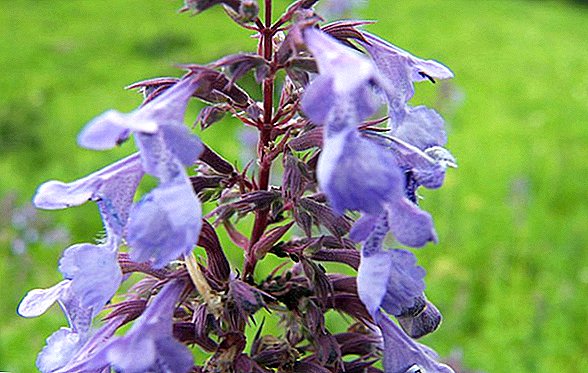
Growing plants at home
Kotovnik Fassena is famous for its unpretentiousness, but for its beautiful flowering it is better to choose a sunny place and calcareous soil. The best places for growing catnip are areas where vegetables used to grow.
Planting seeds
For sowing seeds use:
- open ground;
- greenhouses.
The soil for growing catnip should be dug up and cleaned of weeds. The beds should be well watered. At the end of April, seeds are sown in open ground in rows at a distance of 30 cm, no more than 1 cm deep.
The emergence of the first shoots begins 6-7 days after sowing. After the appearance of several true leaves you need to make the first feeding. 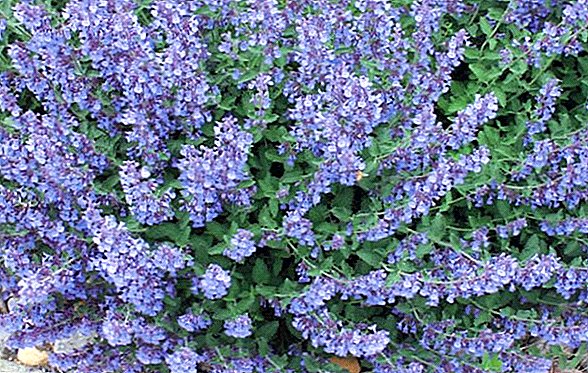 In the greenhouses, seedlings are sown in the second half of March at a depth of 1 cm, in rows at a distance of 5-8 cm.
In the greenhouses, seedlings are sown in the second half of March at a depth of 1 cm, in rows at a distance of 5-8 cm.
Seeds germinate slowly, 1-3 weeks. After the appearance of the first 2-3 pairs of leaves, seedlings dive into small pots - this is necessary for the development of a strong root system. After 50 days, when there will be three pairs of young leaves, seedlings can be planted in the ground.
Important! If you plant a catnip seedlings, then you can wait for flowering in the first year. From seed results will be only for the next season.
Substrate and fertilizer
Kotovnik unpretentious to the soil and will grow in every corner of the backyard, but still needs some additional feeding. In the autumn, after flowering, 2-3 kilograms of compost or humus per square meter are introduced into the ground, and in spring they are fed with complex mineral fertilizer.
The complex mineral fertilizers include such as "Sudarushka", "AgroMaster", "Kemira", "BioMaster", "Kristalon", "Plantafol", "Azofoska".
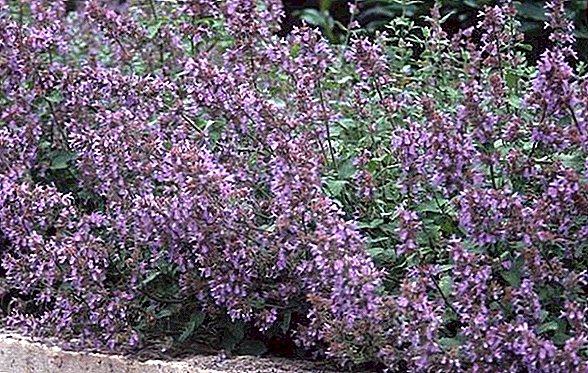 After each cut of the plant, soil is fertilized with superphosphate and ammonium nitrate, 10 g each per square meter. Soil acidity should be slightly acidic or neutral. Acidic soil is usually deoxidized in the fall with dolomite flour during the introduction of humus.
After each cut of the plant, soil is fertilized with superphosphate and ammonium nitrate, 10 g each per square meter. Soil acidity should be slightly acidic or neutral. Acidic soil is usually deoxidized in the fall with dolomite flour during the introduction of humus.Temperature
Kotovnik is intended for cultivation in the middle and southern strip. The ideal temperature for planting and plant development should be within + 16 ... +21 ° C.
The plant, planted in the sun, blooms in the year of sowing, but will quickly bloom and may die in the fall as an annual. In order for the plant to bloom for several years, it is better to plant it in partial shade. 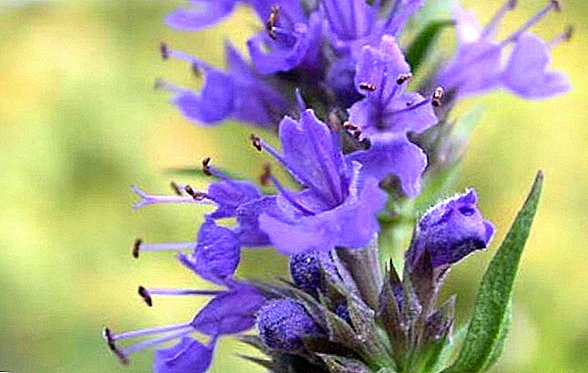
Care: moisture and watering
Years of catnip can live for many years with proper care and watering. Many varieties are resistant to drought, but regular watering affects the quality of green foliage and flowering volume.
Watering the plant is necessary only when necessary, only after the soil has dried out. Frequent and abundant watering will spoil the root system, and the plant will die. To avoid excess moisture and stagnant water, drainage is necessary.
After each flowering inflorescences need to be cut in time to resume re-flowering. With quality care, the plant grows quickly, and soon will decorate the garden and fill it with fragrant aroma.
Did you know? Kotovnik - great honey plant. His specially planted near apiaries. And experienced gardeners sow this plant next to greenhouses in order to attract a lot of bees to pollinate vegetable crops.
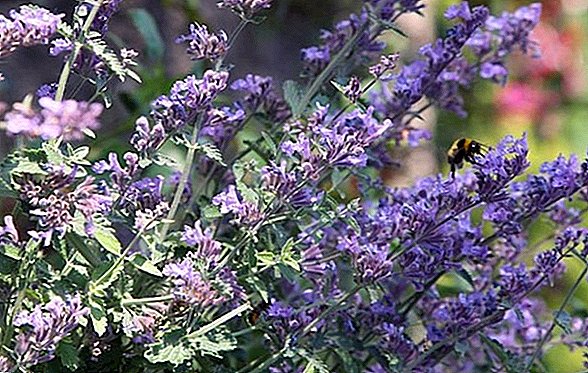
Breeding
Kotovnik Fassena can be propagated in several ways:
- seeds - In April, seeds are sown immediately in fertilized open ground;
- seedlings - at the end of March, the seeds are sown in special boxes or in greenhouses, and after the formation of several pairs of leaves, seedlings are planted on the land.
- root division - in spring or late autumn, a large bush of catnipers is dug up and its root is carefully divided into parts so that each tree has roots and 3-4 buds. Seedlings are planted separately in a new place. This procedure is repeated once every 3-4 years.
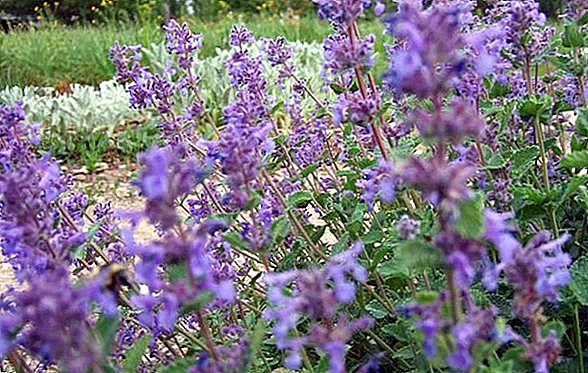 So, we met with Fassen's fragrant catnip, considered its most popular varieties and peculiarities of care. This plant is not only an ornament of flower beds and paths, but is also widely used for culinary purposes, traditional medicine and the production of perfumes.
So, we met with Fassen's fragrant catnip, considered its most popular varieties and peculiarities of care. This plant is not only an ornament of flower beds and paths, but is also widely used for culinary purposes, traditional medicine and the production of perfumes.

